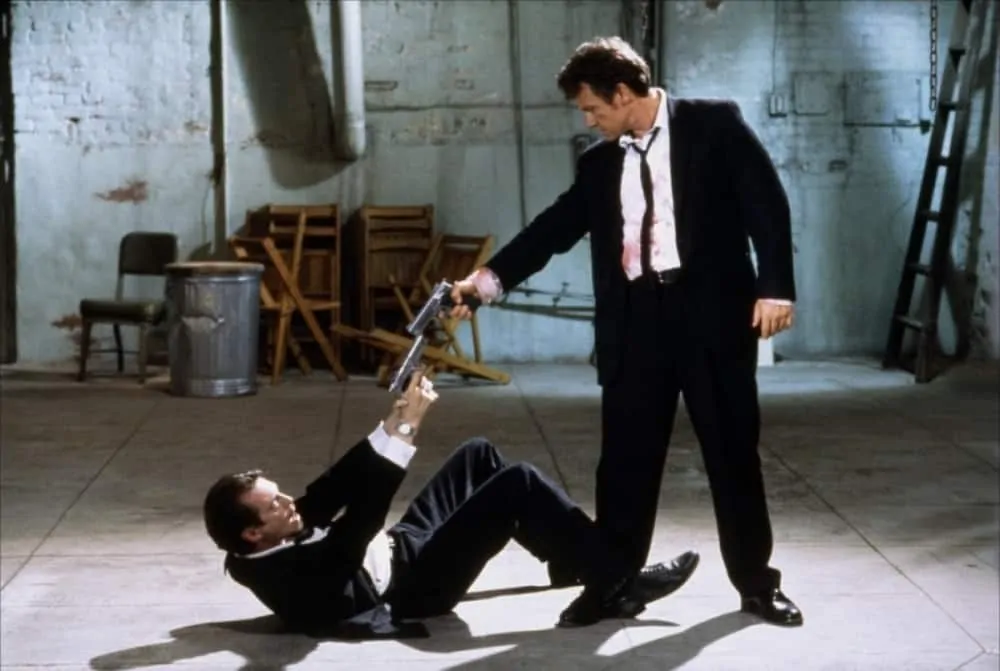There are a few iconic films that have transcended cinema and impacted culture at large and Akira Kurosawa’s Rashomon is certainly one. Kurosawa’s exploration of truth and its expression in the film led to a term that would be used both in and outside of cinema — the Rashomon Effect. The Rashomon Effect is used in a range of subjects from storytelling to psychology to law. So what is the Rashomon Effect? In this article, we’ll be taking a look at its origins, what it means, and its influence on both film and culture.
What is the Rashomon effect?
The Rashomon Effect definition
The Rashomon Effect is a rare storytelling term that is used in areas of film, science and law. To understand how it pertains to all three, let’s take a look at the Rashomon Effect definition and some Rashomon Effect movies.
RASHOMON EFFECT DEFINITION
What is the Rashomon Effect?
The Rashomon Effect is a term used to describe how a single event can be described in a variety of ways due to the unreliability of multiple witnesses. The witnesses’ unreliability and subjectivity are a result of situational, social and cultural differences. The term “Rashomon Effect” was coined after iconic filmmaker Akira Kurosawa first utilized the storytelling technique in the film Rashomon (1950). The movie and the Rashomon Effect influenced countless films throughout history. The Rashomon Effect transcended cinema and is a term that is commonly used in both psychology and law.
Rashomon Effect movies
- Hero (2002)
- Elephant (2003)
- Gone Girl (2014)
- Vantage Point (2008)
- The Usual Suspects (1995)
What is the Rashomon effect in history?
The origin of the Rashomon Effect
When Rashomon won first prize at the prestigious Venice film festival in 1951, the world was introduced to the unconventional and revolutionary storytelling of Akira Kurosawa. At the time, Kurosawa's use of non-linear storytelling, unreliable narrators, and dynamic cinematography was groundbreaking.
What is the Rashomon Effect? What was the story of Rashomon that influenced so many filmmakers and culture as a whole?
It goes without saying that watching Rashomon is a prerequisite for any filmmaker or film buff. That being said, it’s important to understand the plot of Rashomon to understand the Rashomon Effect.
The film opens with three men, a priest, a commoner and a woodcutter, taking shelter from a storm under the Rashōmon Gate in Kyoto. The woodcutter and the priest are discussing the story of how the woodcutter found the body of a slain Samurai in the forest three days prior.
Rashomon Effect in history • A Ghastly Discovery
A bandit was accused of murdering the Samurai and raping the Samurai’s wife. The woodcutter, the priest, the Samurai’s wife, the bandit, and even the ghost of the Samurai were summoned at a trial. However, each account of the event is different and contradictory. The film ends rather ambiguously without a clear resolution of what actually occurred.
The film found success not only because of its engaging story, but its exploration of a common human experience — the quest for truth convoluted with deception, ego, and vanity. Some of cinema’s most prolific filmmakers have drawn on Kurosawa’s Rashomon style storytelling to tell their own stories. Let’s take a look at how the Rashomon Effect can impact story.
Related Posts
What is the Rashomon effect used for?
Takeaways for screenwriters
Rashomon’s impact on cinema is difficult to quantify since its ideas and techniques changed how filmmakers approach story itself. What is the Rashomon Effect used for today?
Let’s take a look at its function in storytelling and how screenwriters have utilized Rashomon-style storytelling in their own films.
1. Conflict
One of the driving forces behind story is conflict. Conflict in a story drives a plot forward, reveals character, and engages an audience. The Rashomon Effect is based on contradicting reports of the same event. The search for the truth through these reports can be a driving force of conflict for a story.
This Rashomon style of storytelling for conflict can be found in Reservoir Dogs, one of Quentin Tarantino’s best films. After a heist goes awry, a group of thieves begin to turn on each other. The accusation of a rat in the group creates in unreliability of each account of how the heist went wrong. This creates tension and conflict that, in classic Tarantino fashion, has fatal consequences.

Conflict in Reservoir Dogs deriving from Rashomon style writing
In an interview with the Seattle Times, Tarantino cited the influence of Rashomon stating, “It’s not exactly Rashomon, [but] you do get a sense of the characters’ different perspectives when they talk about what happened.”
This is a great example of how the Rashomon style is not solely a stylistic technique that is copied by filmmakers, but rather an approach to storytelling that can be riffed on.
2. Unreliable Narrator
The use of an unreliable narrator may seem common today, but in 1950, films were presented from a more objective point of view. This allowed audiences to see the characters as they were or how the filmmakers intended.
Movies with multiple perspectives were unorthodox. However, Kurosawa’s use of unreliable narrators in Rashomon did not tell the audience how to feel or what to believe. The audience had to decide that for themself. This is what made Rashomon so engaging.
Today there are many examples of movies with multiple perspectives. A notable modern riff on the Rashomon Effect that utilizes the unreliable narrator can be found in the 2014 film Gone Girl. In this mystery thriller, a man becomes suspect number one in the disappearance of his wife.
As he becomes less reliable throughout the story, we become more engaged in finding out the truth. Lessons from a Screenplay breaks down the Rashomon style screenwriting techniques used in the Gone Girl screenplay in the video essay below.
Gone Girl • Rashomon Effect examples
3. Ambiguous Endings
At the end of Rashomon, our realization that none of the witnesses are reliable leaves us with more questions than answers. While most films at the time had a clear ending, the ending of Rashomon has no clear resolution. This unconventional decision by Kurosawa left audiences in discussion about what really happened.
In theory, the lack of a resolution should leave an audience dissatisfied or even frustrated. However, the Rashomon Effect can do the opposite. It engages an audience even after the credits roll leaving room for discussion and interpretation. It is not ambiguous for the sake of mystery or confusion, but rather to reiterate themes and larger concepts.
This is what can make or break an ambiguous ending.
Related Posts
UP NEXT
The Color Palette of Akira Kurosawa
Although Rashomon was produced in black and white, Akira Kurosawa is known for his brilliant use of color in his later films. As a master storyteller, Kurosawa’s use of color is a great way to understand the effect color has on story. Check out our next article in which we take a deep dive into Kurosawa’s color palette and the effect of his color choices.
